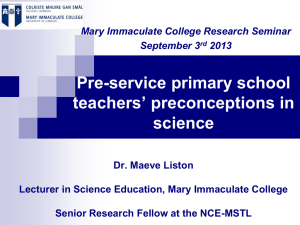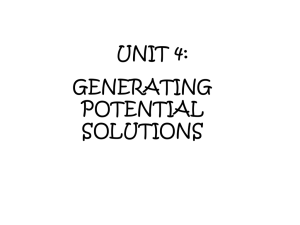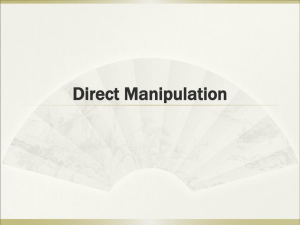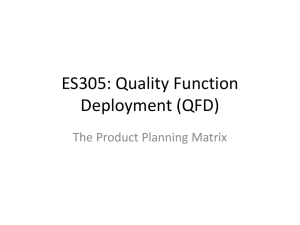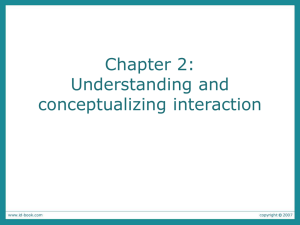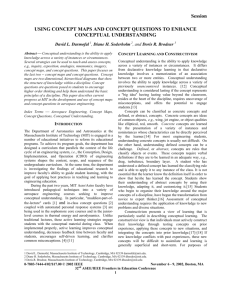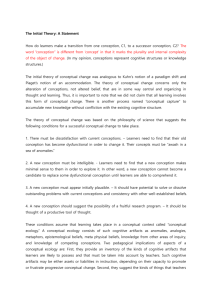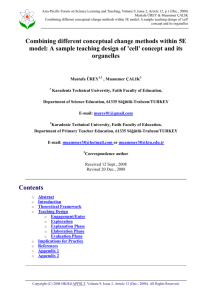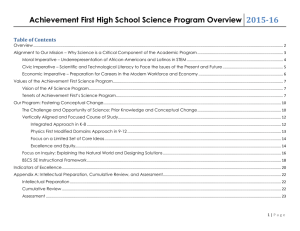Conceptual Change Model: Dispelling Science Misconceptions
advertisement
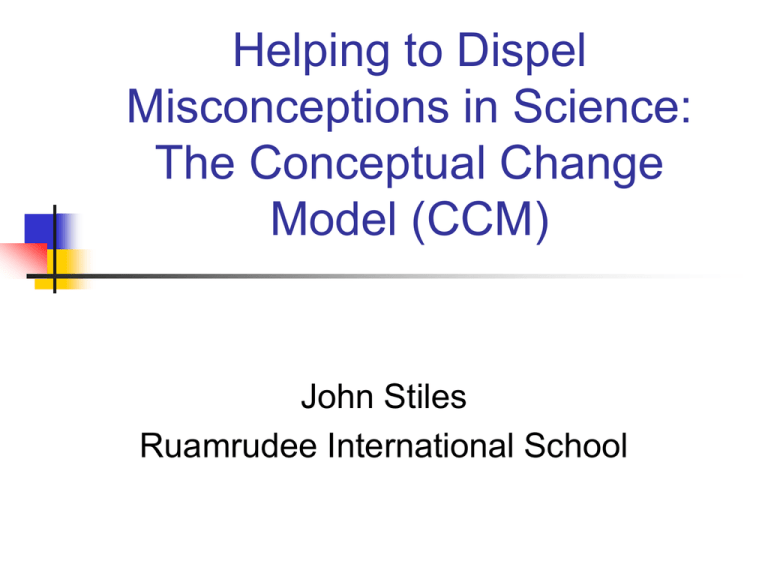
Helping to Dispel Misconceptions in Science: The Conceptual Change Model (CCM) John Stiles Ruamrudee International School Guidelines for Decorum No sidebar conversations Cell phone on silent—please take emergency calls outside if necessary. Participate in activities and discussions Ask questions Have fun! AGENDA 1. 2. 3. 4. 5. 6. Introductions Content Quiz / Discussion Activity Discussion: Teacher role vs Student role Video: Misconceptions about electricity How do we help students get rid of their misconceptions? (CCM) 7. Resources 8. Q & A Common answers based on misconceptions 1. What is in the bubbles in boiling water? Incorrect: Hydrogen, Oxygen, Air 2. In which direction does the Earth spin? Incorrect (From global perspective): Clockwise, Counter-clockwise 3. If you want to see MORE of yourself in a mirror, what must you do? Incorrect: Move away from/closer to the mirror. 4. Where does all the mass of a tree come from if it begins as a small seed? Incorrect: From the soil, from water Incomplete (Almost!): Photosynthesis 5. Why do objects float? Incorrect: They are lighter than water. 6. During a typical 28 day lunar cycle, in how many of the days is the moon visible in the DAYTIME sky (assuming clear skies and unobstructed views to the horizon)? Incorrect: 14, None, All The Light Bulb Challenge • Can you light a bulb using one wire, one bulb, and one battery? • Draw as many different combinations that you predict will work. CHALLENGE LEVELS 1. 2. 3. 4. 5. Show 4 ways to make the bulb light. Make a rule for making a bulb light, that works for all four. Using another wire, make a simple switch. What are ways to make 2 bulbs light using the least materials? Design a dual switch with 2 bulbs so that one switch turns on one bulb and the other turns on both bulbs. STUDENT & TEACHER ROLES In this investigation, what was the role of the student? How does it compare to traditional lessons? What was the teacher’s role? How was the approach different to that in traditional lessons? TALK ABOUT IT! “Minds of Their Own” Video: Why do misconceptions linger? The Conceptual Change Model (CCM) Conditions Necessary to Change Conceptual Understanding The students must be dissatisfied with their existing views. The new conception must appear somewhat plausible. The new conception must be more attractive. The new conception must have explanatory and predictive power. Posner, Strike, Hewson & Gertzog (1982). Accommodations of a scientific conception: Toward a theory of conceptual change. Science Education, 66, 211227. What are the steps to take when teaching for conceptual change? STUDENTS MUST… 1. Commit to an Outcome Students think about their understanding and decide on an answer to a question or challenge. 2. Expose beliefs Students share beliefs in small groups, then with the entire class. This can be done in many formats. 3. Confront beliefs Students test predictions using materials and procedures, followed by discussion in small groups. 4. Accommodate the new concept Students work toward resolving conflicts (if any) between their ideas, the ideas from the class discussion, and their observations. Teachers assist by asking pertinent questions that help students reflect and explain. 5. Extend the concept Students try to make connections between concepts learned in class and other situations, including their daily lives. Teachers may help by asking students to make connections or to bring examples. 6. Go beyond! Teachers encourage and challenge students to pursue additional questions and problems of their choice related to the concept. Something to Remember! 1. 2. 3. Students will not all begin at the same conceptual place. Students will not all finish at the same conceptual place. The goal is to move all students along in their understanding! Do Science Videos Help? Check this web site for an interesting take on effectiveness of videos: https://fnoschese.wordp ress.com/2011/03/17/kh an-academy-and-theeffectiveness-ofscience-videos/ Resources • http://drjohnscience.pbworks.com Click on “Teacher Web Links for Inquiry Science.” • Targeting Student Misconceptions: Physical Science Concepts Using the Conceptual Change Model by Joseph Stepans, PhD. (I bought this book through the NSTA store but can no longer find it. • http://www.newyorkscienceteacher.com/sci/pages/miscon/index.php • http://www.svsu.edu/mathsci-center/uploads/science/gsmiscon.htm • http://homepage.mac.com/vtalsma/misconcept.html • A Private Universe (streamed): http://www.learner.org/resources/series28.html • Minds of Our Own (streamed): http://www.learner.org/resources/series26.html Resources, cont. • • • • Conceptual Change SciEd Resource Assistant (ERIC) http://www.ericse.org/~ericseorg/CD-1/CD/sciedtopics.htm Teaching for Conceptual Change: Confronting Children's Thinking Phi Delta Kappan http://www.mdk12.org/instruction/success_mspap/general/projectbett er/ science/s-52-53.html Teaching for Conceptual Change http://www.mdk12.org/practices/good_instruction/projectbetter/ science/s-5253.html Enhancing Learning Through Conceptual Change Teaching National Association for Research in Science Teaching http://www.educ.sfu.ca/narstsite/publications/research/concept.htm

